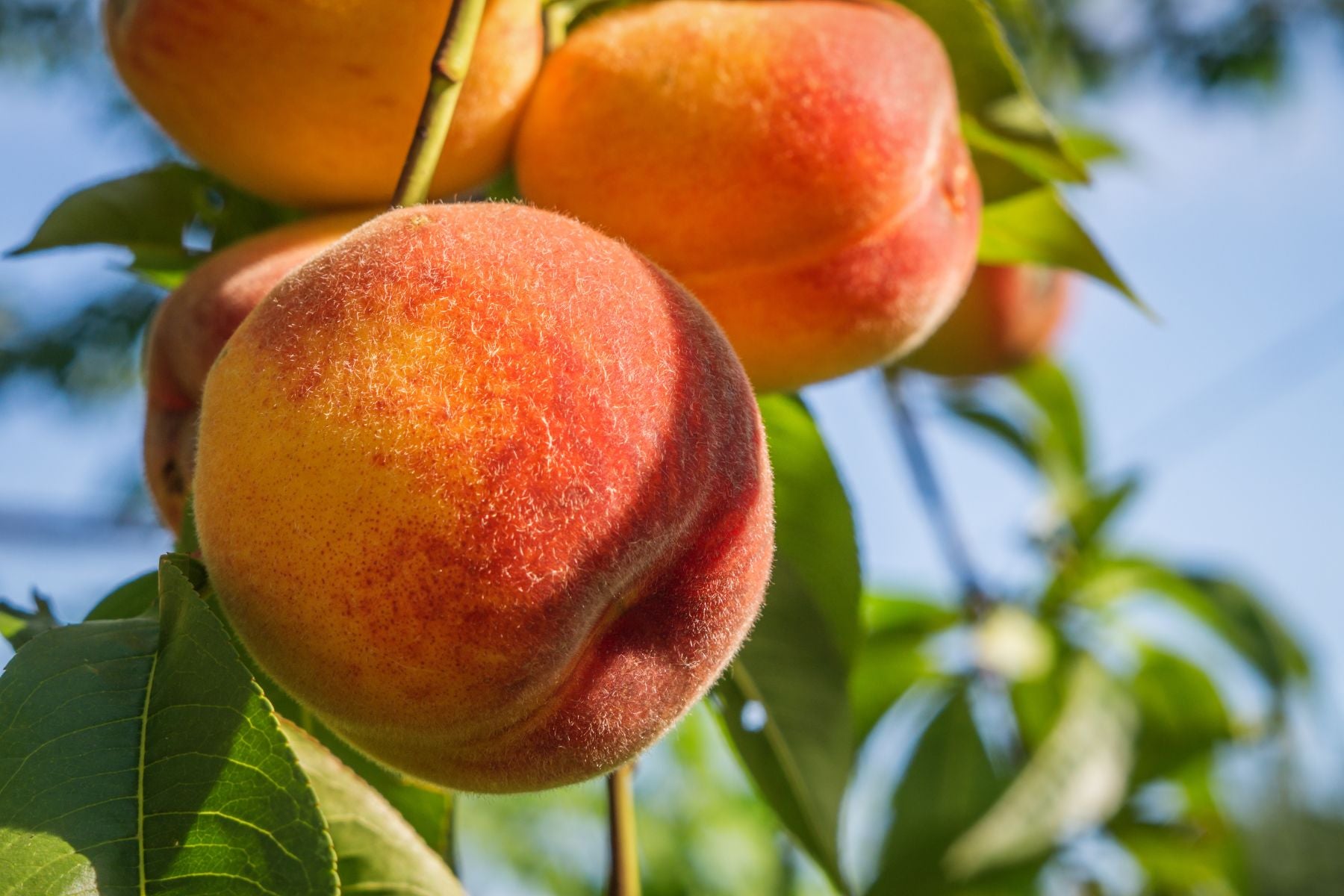Whether you’re making a cobbler, jam, or salsa, fresh peaches are the key ingredient to making a delicious dish. Unfortunately, peaches are usually on the list of fruits containing the most residual pesticide. However, growing them organically on your property takes away that factor. To get started, check out everything you need to know about growing a peach tree.
Preparing To Plant Your Peach Tree
Although you can grow peaches in hardiness zones four through nine, they tend to thrive in zones six through eight. When you live in one of the higher numbered zones, you can choose a variety based on the estimated harvest and flavor quality. If you live in colder regions, focus on finding a cold tolerant variety.
When?
Peach trees are dormant during the winter months, so you should plant them during this period. Depending on your climate, late winter or early spring is the best time to plant peach trees. With that in mind, you must wait until the ground unfreezes and is no longer water-logged after the snow melts.
Looking for young peach fruit trees for sale is the best way to harvest fruit sooner because it can take several years to grow a peach tree from seeds. After getting the tree, it’s best to plant it the same day to reduce stress on the plant. Potted trees can tolerate the pot for a little bit, but you must plant bare-root trees as soon as possible.
Where?
Before you get your peach tree, you should have a planting site ready to avoid the guessing game. Be sure to choose a spot that receives full sunlight all day, including the morning hours. Furthermore, peach trees need well-drained soil, as they don’t do well in consistently wet areas. Because peach trees prefer a slightly acidic soil pH level between 6 and 6.5, testing your soil beforehand can be beneficial for starting on the right foot.
How To Plant a Peach Tree
Believe it or not, digging a hole is one of the most important parts of planting a tree. You should dig a hole a few inches wider and deeper than the tree’s root system. Before putting the tree in the ground, gently pull the roots away from the trunk without bending or damaging them.
Peach trees don’t need fertilizer when planting, so it’s one less thing to worry about. Furthermore, most peach trees are self-pollinating, meaning they don’t require a nearby pollinator to produce fruit. However, if you plan to plant more than one tree on your property, allow at least 15 feet of growing space between each hole.
Caring for Your Peach Tree
Although peach trees aren’t too challenging to care for, they need adequate support in order to thrive. Here are a few ways to ensure a healthy peach tree on your property.
Watering
Peach trees are relatively drought-resistant after maturity, but they may need supplemental waterings during their first two years. While they don’t thrive in overly wet soil conditions, your peach tree should be evenly moist, especially in their first two years before establishment.
Fertilizing
Even though you skip the fertilizer when planting the tree, you should revisit it about 6 weeks afterward. Apply a 10-10-10 fertilizer in a circle around the tree’s base, but keep it about 20 inches away from the trunk to encourage root system expansion. In their second year, apply 3/4 of a pound of nitrogen fertilizer to the tree’s base during the spring and summer. In their third year and beyond, apply one pound of nitrogen fertilizer to the mature tree every spring.
Pro Tip: Fertilize only between spring and mid-summer to encourage tree hardiness.
Pruning
Pruning a peach tree is incredibly important for successful growth and fruitfulness. In fact, neglecting to prune the tree may weaken it, make it more susceptible to disease, or decrease it’s annual fruit yield. Although it may seem odd to remove healthy branches from a thick and hearty tree, pruning is essential for regulating fruit size and ensuring the fruit bearing branches receive adequate sunlight.
You should do most of the pruning during the winter months while the tree is dormant. You can also do some light removal during the summer if the interior branches aren’t receiving enough light. Keep in mind that the pruning you do each winter may determine the fruit quality for the following harvesting season.
How To Harvest Fresh Peaches
You’ll need to harvest the fruit at the right time to get the perfect flavor, texture, and quality. Begin harvesting your gorgeous peaches when they’re fully ripe, between late June and mid-August. Although the time frame is relatively reliable, each variety is slightly different.
With that in mind, you can usually go by the fruit’s color. For instance, ripe peaches should be red-pink and yellow; there shouldn’t be any green spots on the fruit you harvest. Fruits on the outer part of the tree typically ripen first. In addition, perfect peaches should come off the tree with a slight twist of the wrist. Be cautious not to squeeze or tightly grip the fruit, as most peach varieties bruise very easily.
Bonus Tip: If you happen to pick a slightly underripe peach, you can put it in a closed paper bag to ripen.
Storing Peaches
Unfortunately, fresh peaches don’t last very long. You can store them in a plastic bag inside your refrigerator for about a week, but you must make other arrangements if you plan to keep them longer. For instance, making fresh peach jam is an excellent way to use your homegrown peaches. You can also prepare them for canning or freeze them to ensure they last a bit longer. This way, you and your family can enjoy delicious peaches all year long.
Believe it or not, you don’t have to travel to the southern states in order to get your hands on the juiciest peaches—you can grow them right in your own backyard! After learning everything you need to know about growing a peach tree, you’re ready to take on this new adventure. Whether you’re a life long gardener or a beginner, growing peaches is an excellent way to connect with nature and take pride in nurturing this super sweet fruit.




Comments
For planting in a wind-exposed, full sun area, it’s usually best to wait until your tree is about 12–18 inches tall and has a well-developed root system and some woody stem structure. At that size, it’s more likely to handle wind, sun intensity, and transplant shock.
Since your sapling is currently about 4 inches tall, you’re doing the right thing by giving it filtered sun indoors and rainwater care to encourage steady growth. By mid-fall, if it’s reached that 12–18 inch mark and is branching out a bit, it should be strong enough to transplant successfully.
How tall should my sappling be before planting in the ground in a wind resistant full sun area? Planted in mid fallRight now my starter is about 4 inches tall. I try to give it the south morning sun in morning and after lunch move it to the west window to catch the afternoon sun to about 4pm when its done for the day.Feed it rain water mostly Icatch off the roof on warm winter days. Thanks in advance for your plant height answer! Rob